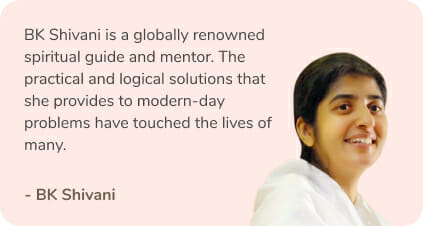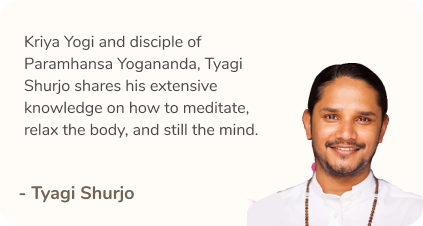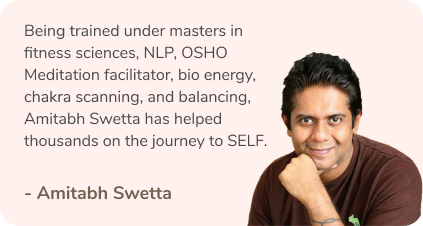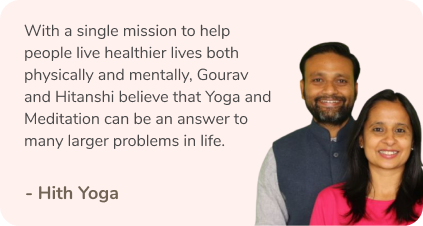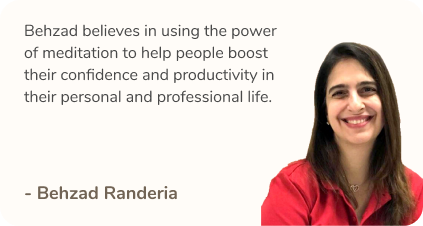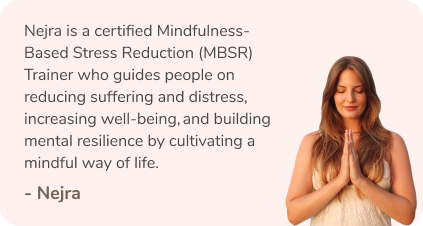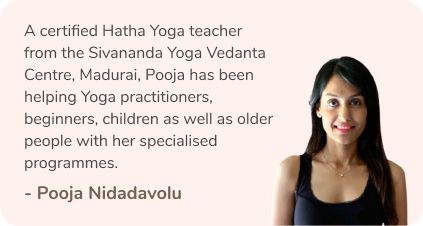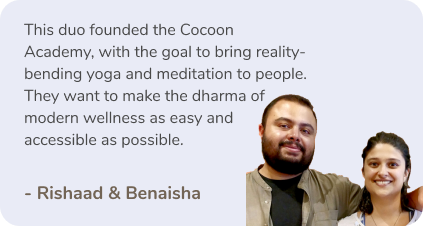Anulom Vilom is a pranayama that purifies the nadis (subtle energy channels) in our bodies and is also known as alternate nostril breathing. The breath alternates between two nostrils – one of the nostrils is always partially blocked, and the flow of air in and out of the lungs is mainly through one of the nostrils at a time. You can easily check this by placing a finger under the nose and breathing normally through the nostrils. In a normal health of the breath, this alternation takes places approximately every hour and fifty minutes. This normal period of breath alternation is established only when one has perfected the practice of pranayama. For most people this alternation of breath from one nostril to the other varies significantly because of a poor lifestyle that includes improper breathing, improper diet, bad posture, lack of exercise, and diseases.
The practice of Anulom Vilom daily helps to regulate the breath between the nostrils.

Steps to Practice Anulom Vilom
- Sit in a comfortable seated (preferable crossed legged) posture, keeping the spine, head and neck in a straight line and shoulders relaxed. Keep the facial muscles relaxed and eyes closed throughout the practice.
- Stay in this posture and take a few breaths in and out mindfully before starting the practice.
- Place the left hand on your left knee in Chin mudra (index finger and thumb touching at the tips, palm facing up) with elbow slightly relaxed.
- Keep the right hand in Vishnu Mudra (first two finger folded and touching the centre of the palm). The right thumb will be used to open and close the right nostril and the ring and little finger will be used to open and close the left nostril.
- To begin the practice – place the right thumb on the right nostril and inhale from the left nostril slowly and silently, then close the left nostril with the third finger or third and fourth both fingers and exhale from the right nostril (by releasing the thumb). Without pausing inhale from the right nostril and exhale from the left nostril. This completes one round of Anulom Vilom.
- Practice this for 5 to 7 mins everyday along with Kapalabhati (prior to this).
Anuom Vilom with Breath Retention
- After practicing the above for a few days comfortably, introduce breath retention in your practice.
- Stage 1: Inhale from left nostril for a count of 4 seconds (you may mentally count Om 1, Om 2, Om 3, Om 4 for the count), retain the breath for 8 seconds, then exhale for 8 seconds. Now without pausing, inhale from right, retain the breath and exhale from left in the same proportion. Thus, the ratio of breath is 1:2:2 (inhale: retain: exhale).
- Stage 2: Inhale from left nostril for a count of 4 seconds, retain the breath for 16 seconds, then exhale from right for 8 seconds. Now without pausing, inhale from right, retain the breath and exhale from left in the same proportion. Thus, the ratio of breath is 1:4:2 (inhale: retain: exhale).
- The inhale and exhale should be silent, slow and controlled and should feel smooth.
Benefits
- Anulom Vimom corrects any incorrect breathing patterns.
- Purifies the nadis and helps in maintaining a balance in using the left and right side of the brain which correlates to the logical and emotional sides of our nature.
- Helps in curing respiratory issues like asthma, emphysema and bronchitis.
- Calms the minds and helps us centre ourselves.
- Relieves stress and anxiety.
- Improves concentration and focus.
Notes / Tips to Follow
- If it is not possible to sit on the floor or crossed legged, sit on a chair in the correct posture with the feet touching down on the floor.
- Press the nostrils very gently.
- Use a meditation cushion or any cushion, pillow or bolster and tuck it under the tailbone to keep the spine tall.
- Ensure to practice on an empty stomach.
- The mind is calm and centred after the practice so it is suggested to practice a short meditation after Anulom Vilom.
Precautions
- People with cardiac or blood pressure issues should not hold their breath and just keep inhaling and exhaling through alternate nostrils.
The best time to practice Anuom Vilom is in the morning (preferably before you start with the day’s routine and after emptying the bowel if possible) and in the evening at dawn.
About the author:

A certified Hatha Yoga teacher from the Sivananda Yoga Vedanta Centre, Madurai, TRM Master Pooja Nidadavolu has been helping Yoga practitioners beginners, children as well as older people with her specialised programmes. Being in the marketing and business world for almost a decade, Pooja found her balance in life through Yoga. Her classes are a combination of pranayama, asana, and relaxation, which ensure holistic wellbeing.
Access the content created by Pooja Nidadavolu on the ThinkRight.me app.
Read More: Don’t Just Sit There! 3 Alternative Meditation Positions
Like & Follow ThinkRight.me on Facebook, Instagram, Twitter, Pinterest and Telegram to stay connected.


